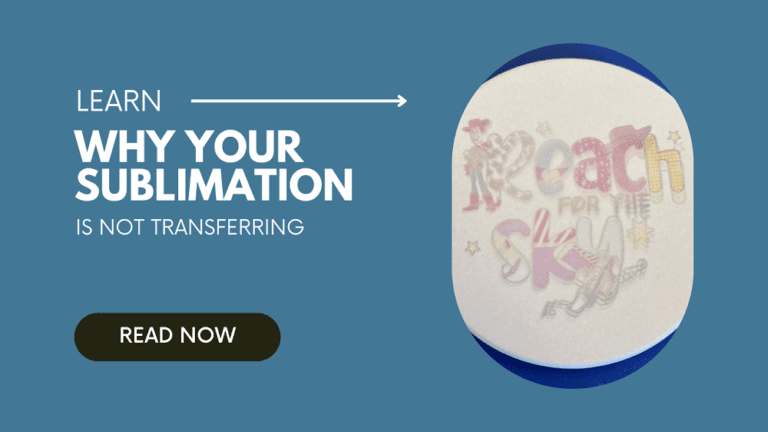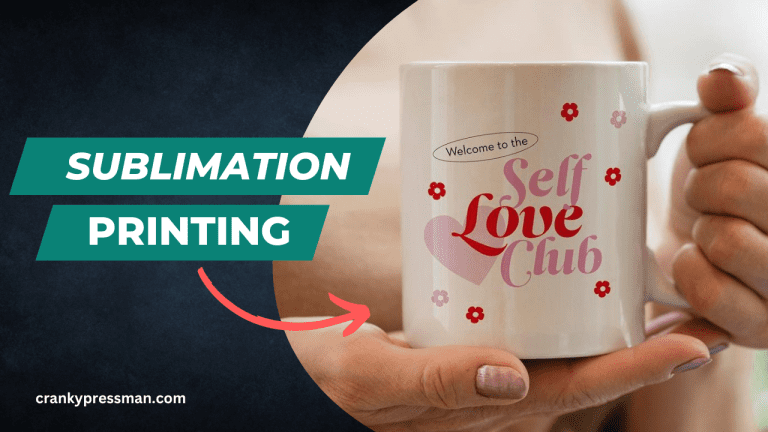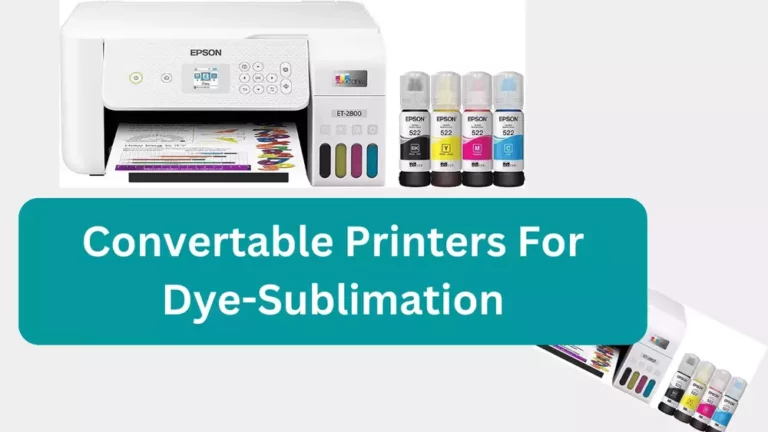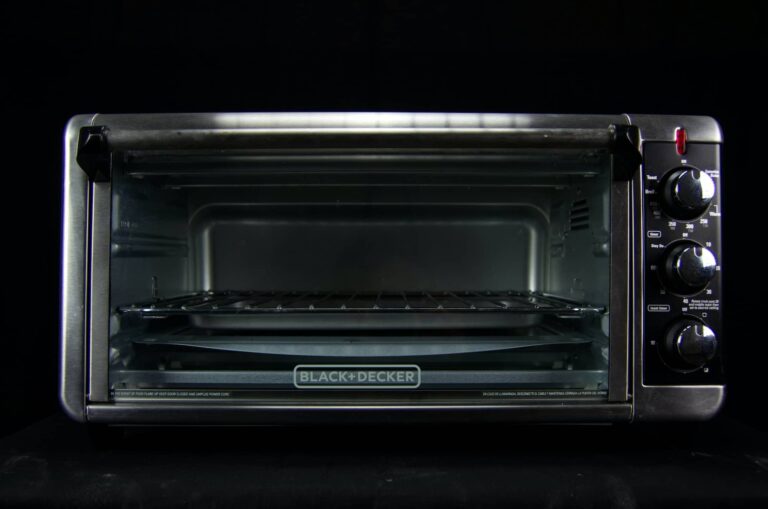Infusible Ink vs. Sublimation Ink: Here is everything you need to know
The outcome of your DIY creations often depends on the printing method you choose. And while there are myriad printing options around, including standard printing, eco-solvent printing, and more.
Sublimation and Infusible Ink printing have recently emerged as the go-to techniques for long-lasting and vibrant results. Both can transfer designs onto specially coated surfaces.
Despite sharing some similarities, Infusible and sublimation ink solutions differ significantly.
In this article, I shall help you make sense of each type of printing ink whilst highlighting the advantages, limitations, and suitability of each. By the end of this article, you should be able to make an informed ink-specific choice for your next DIY project.
Infusible Ink
Infusible ink is a specialized DIY resource for infusing designs directly into the substrate. Unlike other ink variants that come in bottles and require cartridges, Infusable ink comes as part of a compatible Ink sheet or even Ink pen, helping lower the production time and draw and transfer images to the surfaces in virtually no time.
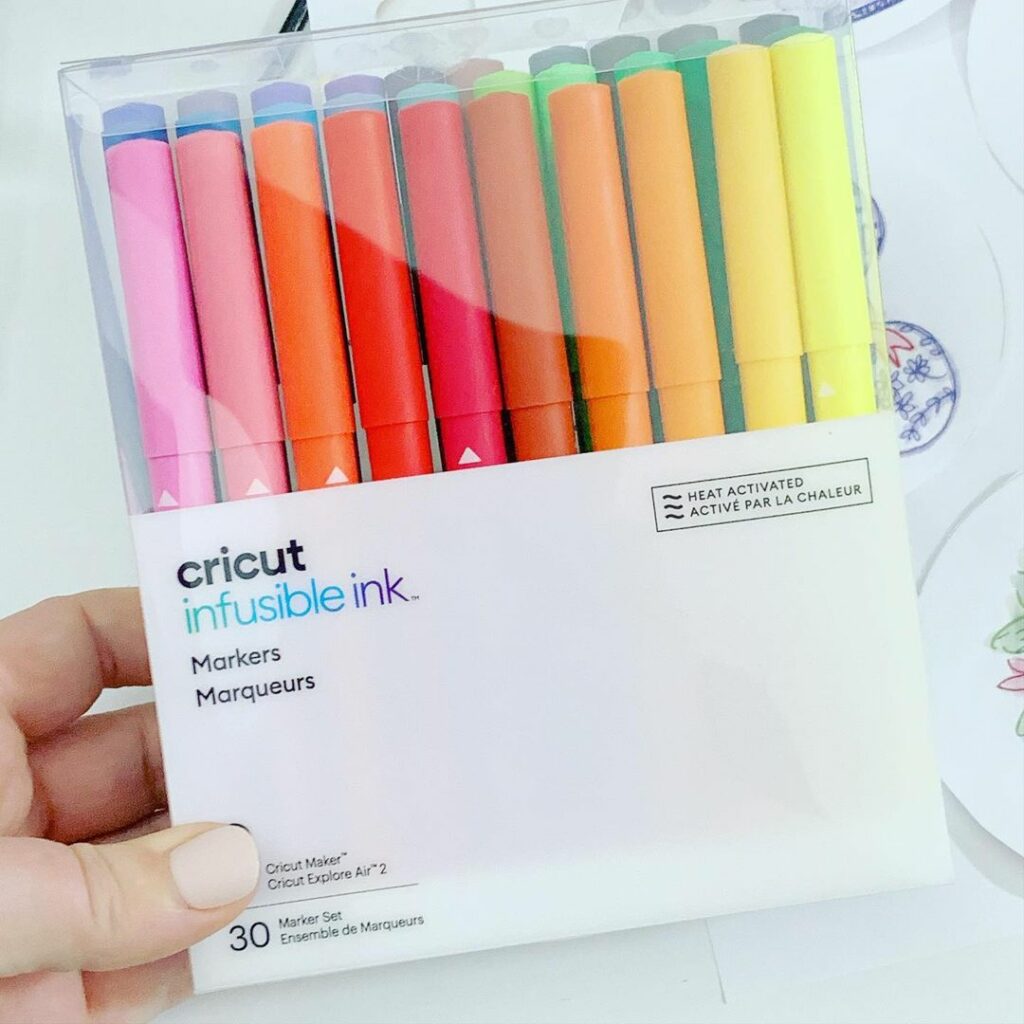
How does Infusible ink printing work?
The process is pretty straightforward as you only need a set of infusible ink pens or sheets followed by a compatible base material, say polyester fabrics, the right kind of heat press, parchment paper, and tweezers. Once you have all of the mentioned tools in your arsenal, here are the steps to follow:
- Start by creating the design on your ink sheet or using your ink pen.
- If it’s a sheet you are using, trim the same and leave out any kind of excess material.
- Have a heat press or the Cricut Easypress ready and prepped up.
- Place the substrate inside the press, cover the same with parchment or even butcher paper, and press the same to remove any wrinkles or texture-specific irregularities.
- Once done, position the ink design onto the surface, face down.
- At this point, you can remove the parchment paper from atop the substrate and place it on top of the design.
- Press the same with recommended heat settings, and once done, remove the transfer sheet carefully using tweezers or even a weeding tool.
Most Infusible ink transfer sheets cost somewhere around $10-$20, per pack, depending on the design and quality of the sheets. Pens or markers with infusible ink can set you back at close to $15 for a pack of 5. And finally, if you aren’t happy with the pre-set design associated with the ink sheets, cutting them to achieve complexity is possible with the likes of Cricut cutting machines.
Benefits of using Infusible Ink
- Designs created using infusible ink printing are crack, peel, and fade-proof.
- Designs look professional and organic extensions of the substrates.
- They can be used on hard surfaces and even polyester fabrics.
- This printing strategy aligns perfectly with cutting machines from the likes of Cricut.
Limitations of Infusible Ink
- The substrate range isn’t as wide as in the case of other ink types like Sublimation ink solutions.
- Limited color and design options.
- Beginner DIY artists might find Infusible ink printing harder than usual.
In case you want to print something on bags, apparel, custom mugs, phone cases, coasters, and even some custom T-shirts at a clip, Infusible ink printing makes sense.
Sublimation Ink
Sublimation ink is your standard sublimation printing resource that comes in a bottle, comprises a water base, and pigments that turn to gas when brought in contact with heat and pressure.
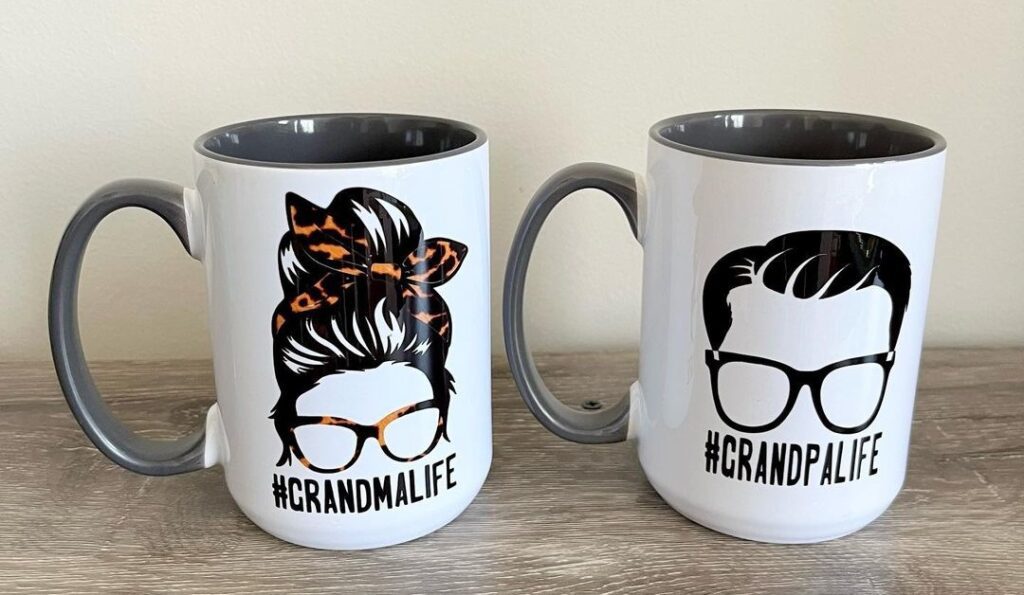
These ink variants can be used with inkjet and standard dye-sublimation printers, provided you have the right sublimation paper and ink-holding cartridge at your disposal.
Coming to the examples, you can choose between the likes of SawGras SubliJet UHD, Epson UltraChrome, Cosmos, and other variants.
In most cases, these ink bottles cost you anywhere between $15 to $30.
Using sublimation ink is easy. You need to fill up the compatible printer cartridges, use a sublimation paper sheet to get the right design (mirrored), and press the design onto the substrate in the presence of heat and pressure. The solid (design on paper) turns to gas and infuses with the substrate molecules, offering a lasting print.
Also read: Check out this detailed guide on how to do sublimation.
Perks of using sublimation ink:
- The designs are fade and peel-resistant.
- They are compatible even with standard inkjet printers, provided there is a supported cartridge in play.
- Design flexibility is out of this world.
Limitations and challenges of sublimation ink
- Higher costs due to an extensive setup.
- Not suitable for fabric with high concentrations of cotton.
If you have plans of personalizing pillows, blankets, keychains, phone cases, business banners, sportswear, and other similar products with better control over your designs, sublimation ink solutions fit in better.
Sublimation ink vs. Infusible ink
Let us first start with the similarities. Both sublimation and infusible ink variants offer long-lasting and vibrant results. Plus, they really work best when the surface comprises the right coated substances or polyester. And finally, both these ink types respond well to pressure and heat.
Related: read our guide on the best sublimation printers.
The key difference between Sublimation ink and infusible ink is in regard to usage. Infusible ink solutions work as pre-printed sheets or pens, whereas sublimation ink solutions follow the complete lifecycle — from bottle to paper to surface. The design customization is, therefore, higher for sublimation ink as infusible ink variants are more plug-and-play solutions.
Overall, if you have plans of printing set designs on specific surfaces in a heartbeat and on a budget, I would recommend infusible ink printing as the way to go. However, if you prefer to take some time, spend more on your DIY gigs, and customize designs at will — choosing sublimation ink for printing makes more sense. In the end, it all depends on your requirements.
Also read: Eco-solvent ink Vs. Sublimation ink.
FAQs
Can you use Cricut Infusible Ink for sublimation?
Cricut infusible ink is not exactly ink but a transfer system to print quickly on specific substrates using the infusible ink printing strategy, pre-printed sheets, and the Cricut cutting machine for adding personalized touches. As high-end as the Cricut infusible ink is, it isn’t recommended for sublimation printing.
Can you use Infusible Ink in a printer?
No, infusible ink cannot be used in or with a printer. In fact, infusible ink isn’t exactly ink but more of an ink transfer system using pre-printed design sheets or pens. In case you prefer customizable ink solutions, sublimation is a better strategy.
How long does Infusible Ink last on shirts?
Like sublimation, even Infusible ink solutions are long-lasting and extremely durable. However, the exact lifespan depends on the quality of pre-printed sheets, the nature of the base material, and environmental factors. Still, you can expect the colors and design to last for 3 to even four years, easily.


